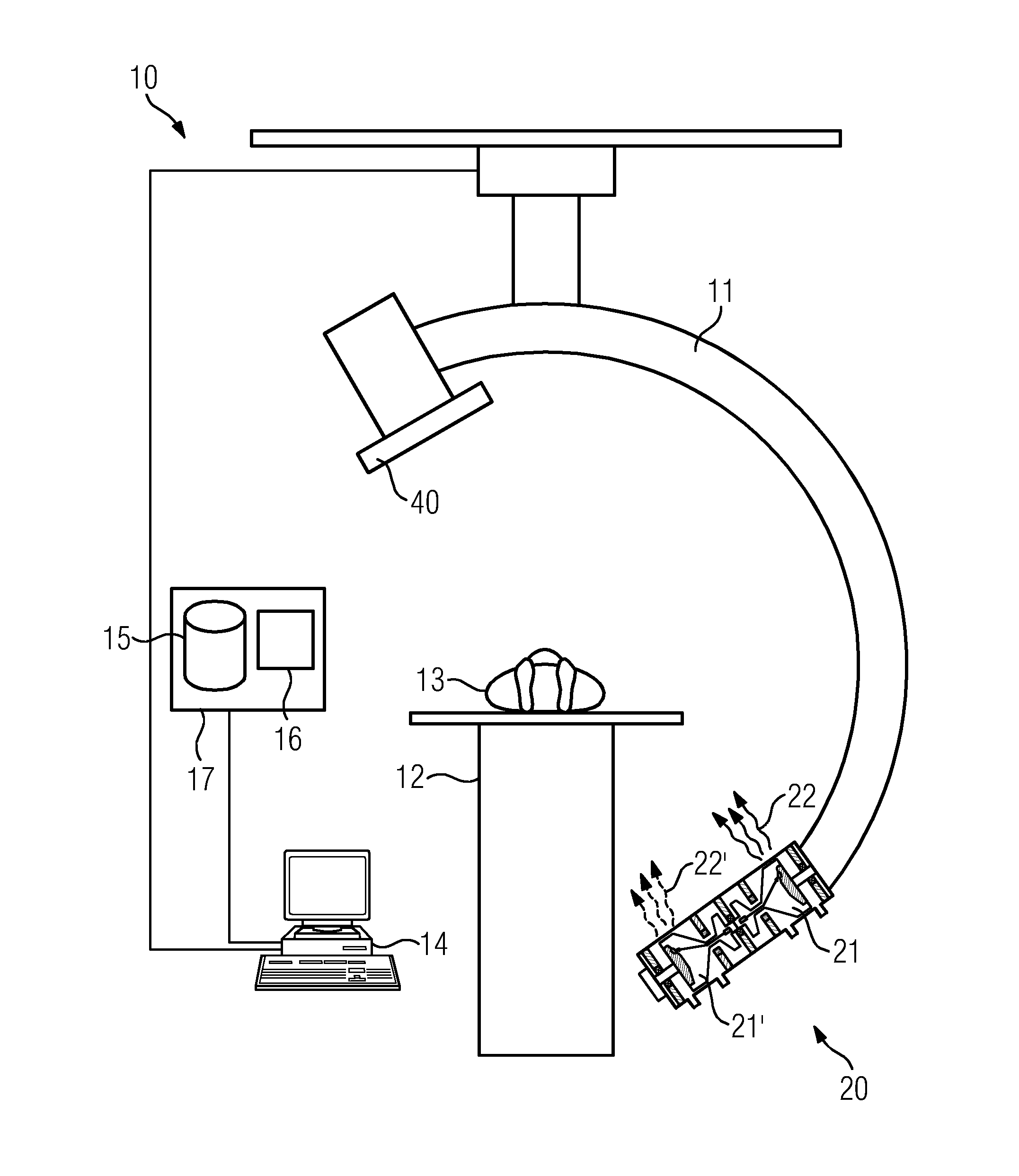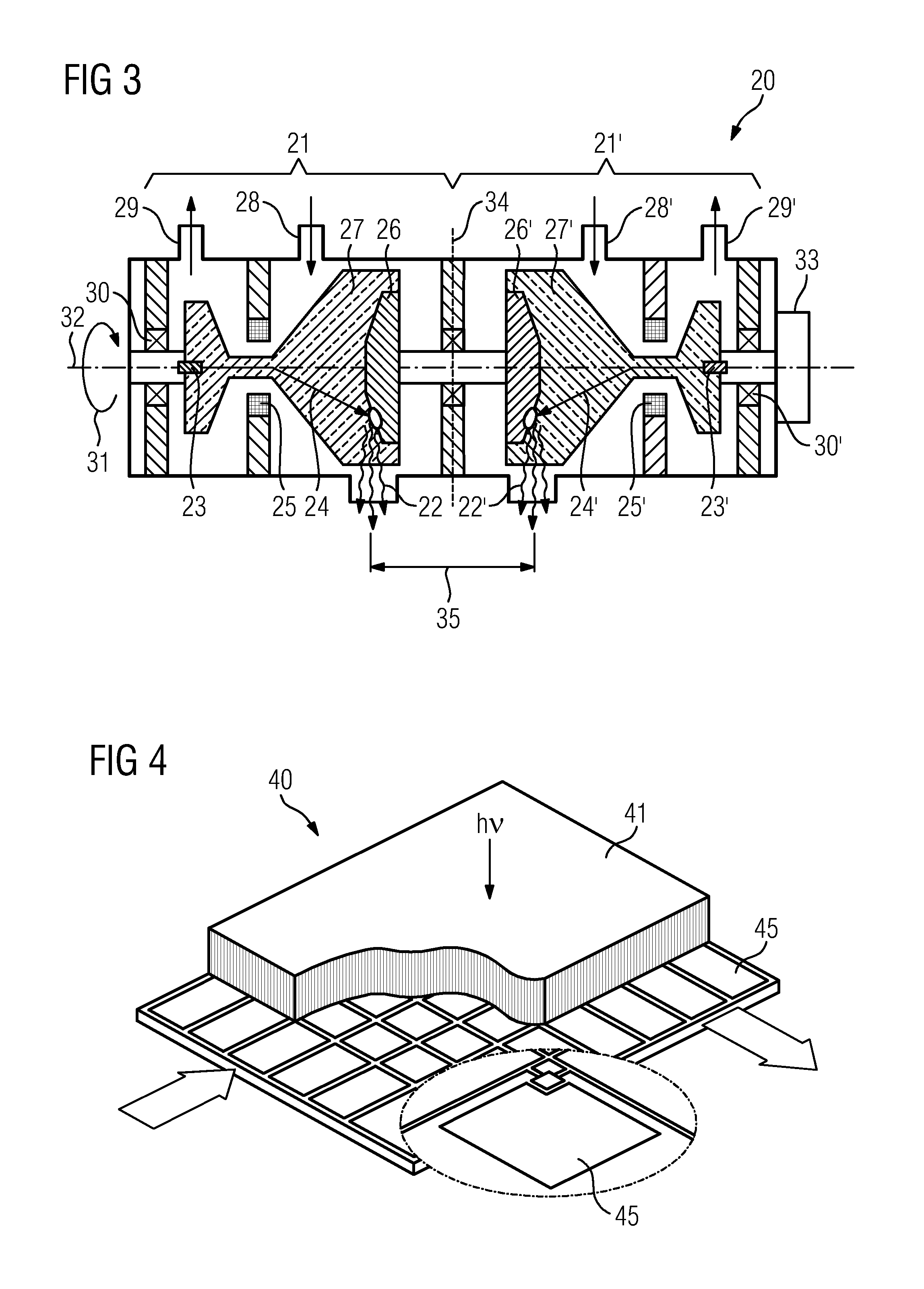Method and system unit for stereoscopic x-ray imaging
a stereoscopic x-ray and imaging system technology, applied in the field of stereoscopic x-ray imaging, can solve the problems of not allowing the generation of spatial or 3d impression of different structures of organs, unable to achieve the perception of foreground and background only to a limited degree, and achieves a very short distance between the central beams of x-ray beam sources. , the effect of small structur
- Summary
- Abstract
- Description
- Claims
- Application Information
AI Technical Summary
Benefits of technology
Problems solved by technology
Method used
Image
Examples
Embodiment Construction
[0047]FIG. 1 shows an embodiment of an x-ray beam source 21, which comprises an x-ray tube for generating x-ray beams 22 according to the prior art. More specifically it comprises a cathode 23 and an anode plate 26, which are disposed in an evacuated glass body 27. The electrons 24 emitted by the cathode 23 are accelerated by a high voltage and, in some instances after their flight path has been controlled by deflection coils 25, strike the anode plate 26, where they are slowed down and generate the characteristic x-ray radiation, braking radiation and Lilienfeld radiation. The x-ray beam source 21 is embodied as a so-called rotating envelope tube. This means that the glass body 27, which is guided in bearings 30, the cathode 23 and the anode plate 26 are shaped with rotational symmetry in relation to an axis of rotation 32 and can execute a rotational movement 31 with the aid of a symbolically represented motor 33. To cool the anode plate, which becomes hot due to the electron bomb...
PUM
 Login to View More
Login to View More Abstract
Description
Claims
Application Information
 Login to View More
Login to View More - R&D
- Intellectual Property
- Life Sciences
- Materials
- Tech Scout
- Unparalleled Data Quality
- Higher Quality Content
- 60% Fewer Hallucinations
Browse by: Latest US Patents, China's latest patents, Technical Efficacy Thesaurus, Application Domain, Technology Topic, Popular Technical Reports.
© 2025 PatSnap. All rights reserved.Legal|Privacy policy|Modern Slavery Act Transparency Statement|Sitemap|About US| Contact US: help@patsnap.com



